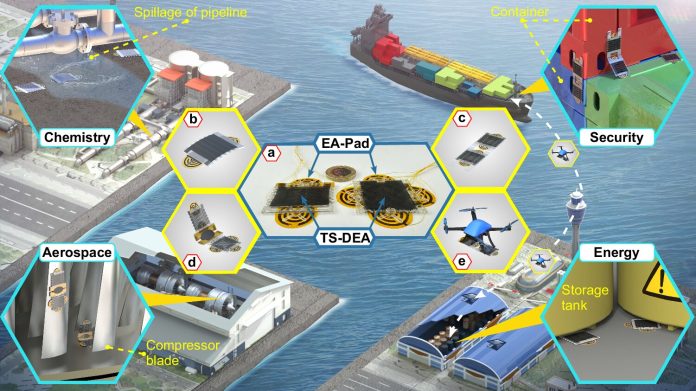
Researchers at Rolls-Royce University Technology Centre (UTC) in Manufacturing and On-Wing Technology at the University of Nottingham have created a new type of ultra-thin soft robot that can explore tight spaces in difficult environments.
These robots, called Thin Soft Robots (TS-Robots), are designed to assist in the inspection and maintenance of complex structures like power plants, bridges, and airplane engines.
Their small size and ability to move in different ways give them a unique advantage over traditional robots.
The TS-Robots are just 1.7 millimeters thick, making them incredibly slim.
This thin design allows them to access narrow spaces, such as tiny gaps beneath doors or inside intricate machinery.
Their flexibility and thinness mean they can go where other tools and robots can’t, making them perfect for exploring difficult-to-reach areas.
What makes these robots special is their “multimodal” ability to move in different ways. They can crawl, climb, swim, and even switch between moving on solid surfaces and in liquid environments.
This versatility is possible because of their unique structure, which is driven by dielectric elastomers—materials that change shape when electricity is applied.
This design allows the robots to easily adapt to different types of terrain and obstacles, such as narrow gaps, walls, trenches, or even liquids.
Dr. Xin Dong, the lead researcher on the project, explained that the TS-Robots are designed to overcome many challenges faced by traditional robots in complex environments.
“Our TS-Robots are built to handle difficult obstacles like narrow gaps, walls, and liquids,” said Dr. Dong. “Conventional robots struggle in these situations, but our technology offers a new solution for exploring these challenging areas.”
The performance of these robots is impressive. They can generate forces up to 41 times their own weight, and they can move at speeds of up to 1.16 times their body length per second. This means that despite their tiny size, they are strong and fast.
These abilities also allow the robots to work together with other TS-Robots or even with drones, making them even more useful in complex tasks like inspecting hazardous environments or delivering items in tight spaces.
In early tests, the TS-Robots have already proven their effectiveness. One of their key applications has been inspecting the electrical generators of advanced hybrid-electric power systems.
The robots successfully navigated the narrow air gap between the rotor and stator of a generator—an area that traditional robots and tools could not reach.
Dr. Xi Wang, a researcher involved in the project, expressed excitement about the potential of the TS-Robots.
“What started as a ‘crazy’ idea three years ago has now become a reality,” said Dr. Wang. “We have not only proven a new concept for soft robots but also found practical uses for them in real-world situations.”
Professor Dragos Axinte, director at Rolls-Royce UTC, is optimistic about the future of these robots. He believes they could play a crucial role in inspecting and maintaining the next generation of clean power systems, helping to achieve global net-zero goals.
With promising early results, the team plans to continue improving the design of the TS-Robots and exploring new uses in industries like aerospace, energy maintenance, and nuclear decommissioning.
These thin soft robots could revolutionize how inspections and maintenance are done, especially in challenging environments that are difficult for humans and conventional robots to access.



